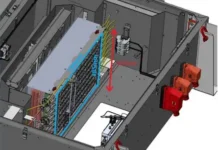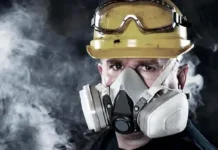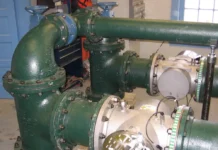Compiled by Castine Bernardy, Nicola Elardo and James P. Malley Jr., Ph.D.; University of New Hampshire, Durham, New Hampshire
Editor’s Note: Owners and operators of UV technology are an important stakeholder group; these professionals have limited time and often prefer to remain anonymous when providing feedback. As a result, UV Solutions now builds this column from responses to a Qualtrics survey sent out each quarter with the help of UNH graduate students.
Decades of applying UV disinfection technologies to wastewater, drinking water and, more recently, stormwater have developed an excellent track record of success. In addition, operating staff have encountered and successfully overcome many challenges. This month’s survey questions focus on the innovations made by operating staff.
Please give one or more examples of challenges staff has encountered with your UV system. What steps were taken to address these challenges?
Five wastewater facilities discussed problems with UV sensors on their banks of lamps, with four reporting the following steps to resolve the issues:
- Fouling of the sensors and sensor readings that did not make sense have been problems in our system since it was new. Sensor signals were removed from the SCADA, and the UV system is monitored for effluent E. coli, with routine bank cleaning on a timed schedule.
- Staff developed a long wand with replaceable cleaning pads on the end. The pads were treated with Lime-A-Way or CLR and are used to wipe the sensors off weekly.
- Sensors were relocated and welded to a location where the flows flush the sensor faster. This improved the reading stability, and most of the readings matched the effluent coliform results better.
- Staff fitted shields to the sensors, which helped reduce fouling and stabilize sensor input to the SCADA system, but our facility still relies upon E. coli monitoring to control dosing in our UV system.
Three utilities reported extended periods of ballast problems and replacements as follows:
- Early operations had problems with electronic ballast failures in our drinking water facility, with the vendor providing a variety of reasons for it – from faulty manufacture or damage during installation to excessive amounts of dust and dirt in the cooling fans. Complete replacement solved the early problems. We still find ballast life to be much less that originally budgeted.
- Ballast overheating had been a continuing system problem in our wastewater channels for many years when outside temperatures exceeded 90° F. Several things were tried, from rotating shutdowns to increasing air cooling, but did not solve the problems. Two employees had the idea of building cooling coils for each ballast and pumping treated effluent through the coils. The effluent temperature normally is about 60 to 75° F. This solved the problems, and we clean the coils with some chlorine periodically.
- Removal of all shrouds and metal coverings and using blowers to air cool our ballasts greatly extended the life of each ballast, but still the life is shorter than we had expected when selecting the system.
Two drinking water utilities wrote about problems with chlorine residuals upstream of the UV system.
- We always have chlorinated in the clarifier and filter gallery to control slime growth, and then we added more chlorine in the clearwell. The UV system removed chlorine residual, and our consultant showed us that it was increasing our sleeve and sensor problems due to iron stains. The problem got better when we changed to only seasonal chlorine addition at very low levels in the clarifier.
- Removal of our chlorine residual by the UV system forced us to rechlorinate and spend more on bulk chlorine deliveries. We tried a few things but could not run without chlorinating before the filters without very short run times. Our ability to lower UV dose as suggested by our supplier was very limited by our UV units’ specs. After considering an upgrade to the UV system allowing more dose pacing, the decision – based on cost – was to continue current practices and live with the additional chlorine usage.
One wastewater and one stormwater facility response spoke to the issues of sleeve cleaning and wipers.
- Our facility upgraded to a new UV system that replaced our chemical cleaning dip tank with individual lamp wipers. The new system is a good improvement, but the wipers have had problems over the past few years. Drive motors had very short lives, and many were replaced annually. Checking into this, the binding and alignment of the wipers were not plumb, and most were in more frequent wiping mode than we probably needed. Mechanical contractors replumbed the wipers, and drive shafts and wiper frequency were changed from continuous to flow-paced, which was about every two to four hours. This did the trick.
- Wiper systems have been plagued with grit and trash during the stormwater surges due to a limited amount of grit and trash breaking through the pretreatment tanks. These either jam the wipers or the grit winds up being caught in the wipers and damaging the sand blasting sleeves. After trying different wiper frequency and different wiper heads, the system was abandoned, the wiper mechanisms removed and cleaning now is done with offline manual chemical cleaning.
It was interesting that nine of the 11 total responses to this quarter’s survey all referred to problems they related directly to COVID-19. The ones with solutions are offered here:
- The biggest challenge has been staffing since we have very limited workforce right now with many folks retiring, others out sick and our existing staff having to take many more steps to meet our COVID-19 operating protocols, so the UV systems are not getting the daily attention that we found worked best. Essential maintenance was prioritized, which involved repairs and replacements as well as cleaning only when effluent Colilert results indicated a concern.
- All our systems, including the UV components, are impacted by our inability to get parts. We have had delays in ordering on our end, shipping on their end and deliveries. By the second year, we had resolved much of this by finding multiple sources, working with other association members to share parts and creating a bank of extra items at the plant that tend to wear out fastest, like lamps, sleeves and ballasts.
- Our facility has had very challenging operations due to reduced flows from reduced discharges by our businesses and industries. This impacted the UV system significantly since, at times, the flows to those channels were essentially zero, leading to UV water-level alarms and system shutdowns. The extremes were not possible to handle by flow pacing or adjusting gate valve controls. Changes were possible in RAS and WAS rates. We also were able to reduce secondary settling from three tanks to two. This helped to some degree, but we were limited by needing to avoid plant upset and maintaining BOD and TSS compliance. The problem has been alleviated as the collection area businesses and industries have gone back to at least minimum levels of production, giving us flows just above our minimum design.
- We operate a very small facility, and all processes have been impacted by loss in two of our three workers as well as double and triple the amount of normal time it takes to get needed supplies delivered. Shifting from our normal ordering and supply chain approaches to Amazon helped with many items, and we also were very fortunate to get state help that provided some National Guard members to help us staff the plant.
Contact: Castine M. Bernardy, Ph.D. student, castine.bernardy@unh.edu; Nicola M. Elardo, MS student, nicola.elardo@unh.edu; James P. Malley Jr. Ph.D., editor-in-chief of UV Solutions and professor of civil and environmental engineering, jim.malley@unh.edu






